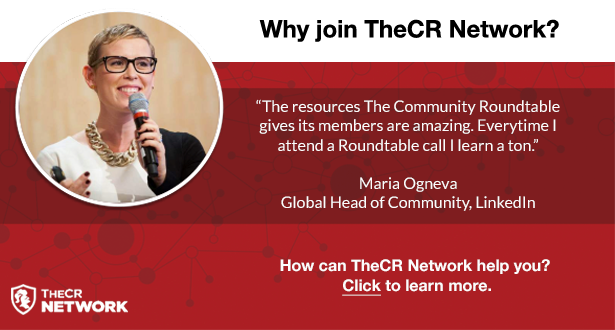When thinking about engagement many community managers dismiss the idea of formal training program for their members. For some it’s just too much work – if you have thousands of members already set in their ways, where do you even start?
Hillary Boucher recently led a Roundtable Call with members of TheCR Network that touched on this very topic (members see: Employee Adoption and Engagement in External Communities) and came away with some great ways to increase adoption and engagement through the use of several different kinds of training programs. Here are a few things to consider when thinking about training your community members:
Old Dogs, New Tricks
 Training people who have never been trained is a common challenge. This is trickier than training a newcomer because of old, and often incorrect habits that are hard to break. If you are faced with training members that have different levels of experience try offering different types of training.
Training people who have never been trained is a common challenge. This is trickier than training a newcomer because of old, and often incorrect habits that are hard to break. If you are faced with training members that have different levels of experience try offering different types of training.
A short document explaining how to set up the account and best practices and where to find the ground rules is a great way to level set with every member of your community – those being re-trained can particularly benefit from this type of training. They can quickly review the document, and take away only what they need without sinking a lot of time into it.
The other option for training multiple audiences is self-paced training modules and videos. These can be as long or as short as needed to share the fundamental concepts.
A third type of this training is a series of one-pagers that focus on unique or difficult cases. As members encounter specific challenges they can access the in-depth info they need as they work through the problem.
Everyone is Equal
Some community managers train all new hires regardless of their role in the organization. By engaging with new employees, you can capture excitement early and get member’s wheels spinning on how the community can benefit them from day one. With this type of front-loaded training, you have the option to provide everyone with a common fundamental overview for community engagement and provide specific best practices for different teams. For example, you might offer specialized training for your support team, product team, etc.
A Horse of a Different Color
Some community managers find that formal training just doesn’t work for them – but they still need to communicate and encourage best practices, how-tos, and FAQs. One way to “train” your members without a formal training program is regular blogging. By sharing the information your members need to know through a less-formal channel you create evergreen content that can be used by all members of your community, regardless of their level of expertise or tenure.
Remember, there isn’t much you can do to stop people from engaging in the community without training. That is a huge challenge – and one to consider as you evaluate training options. Do you currently offer training to your community members? What programs have you found most helpful in getting members engaged?

